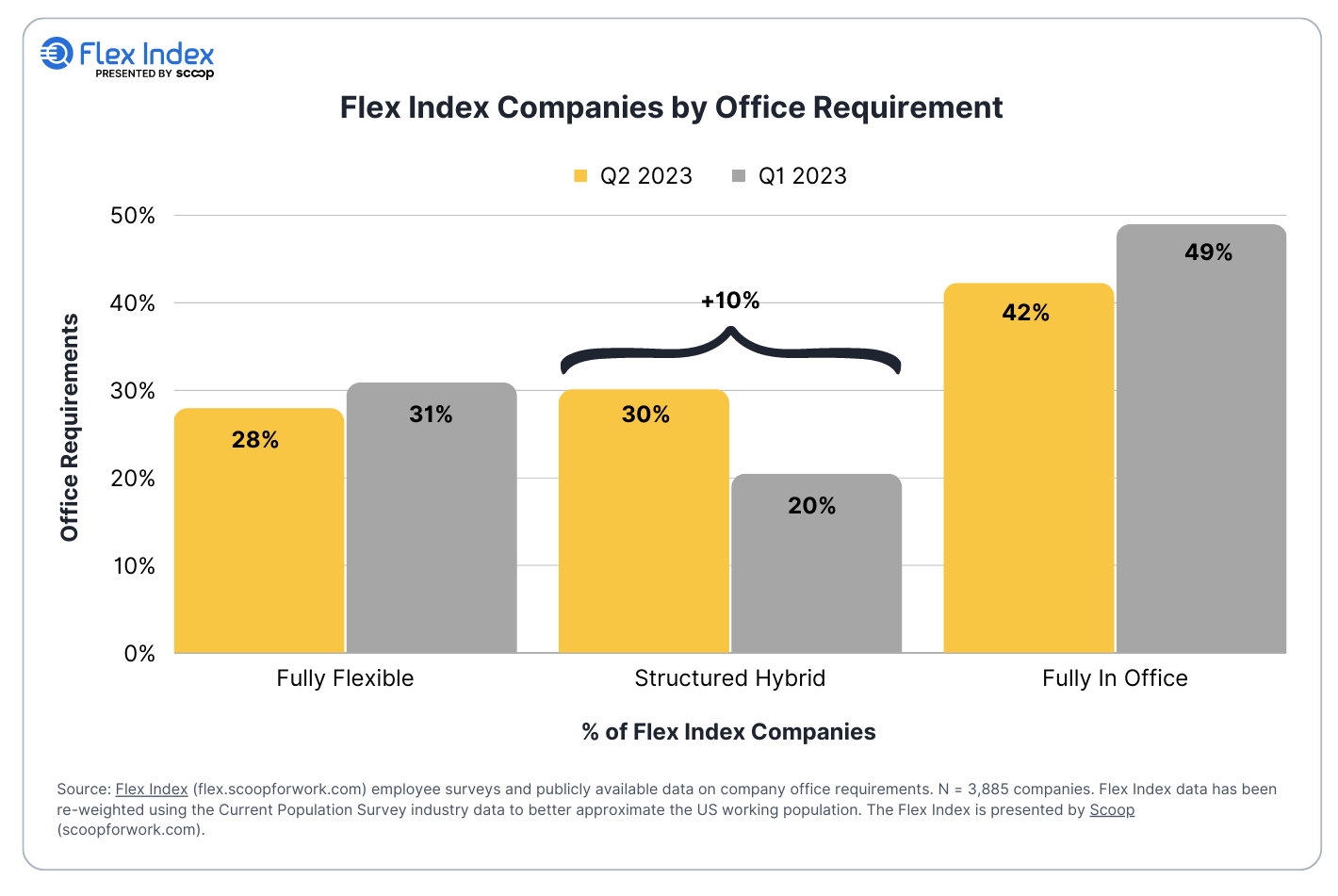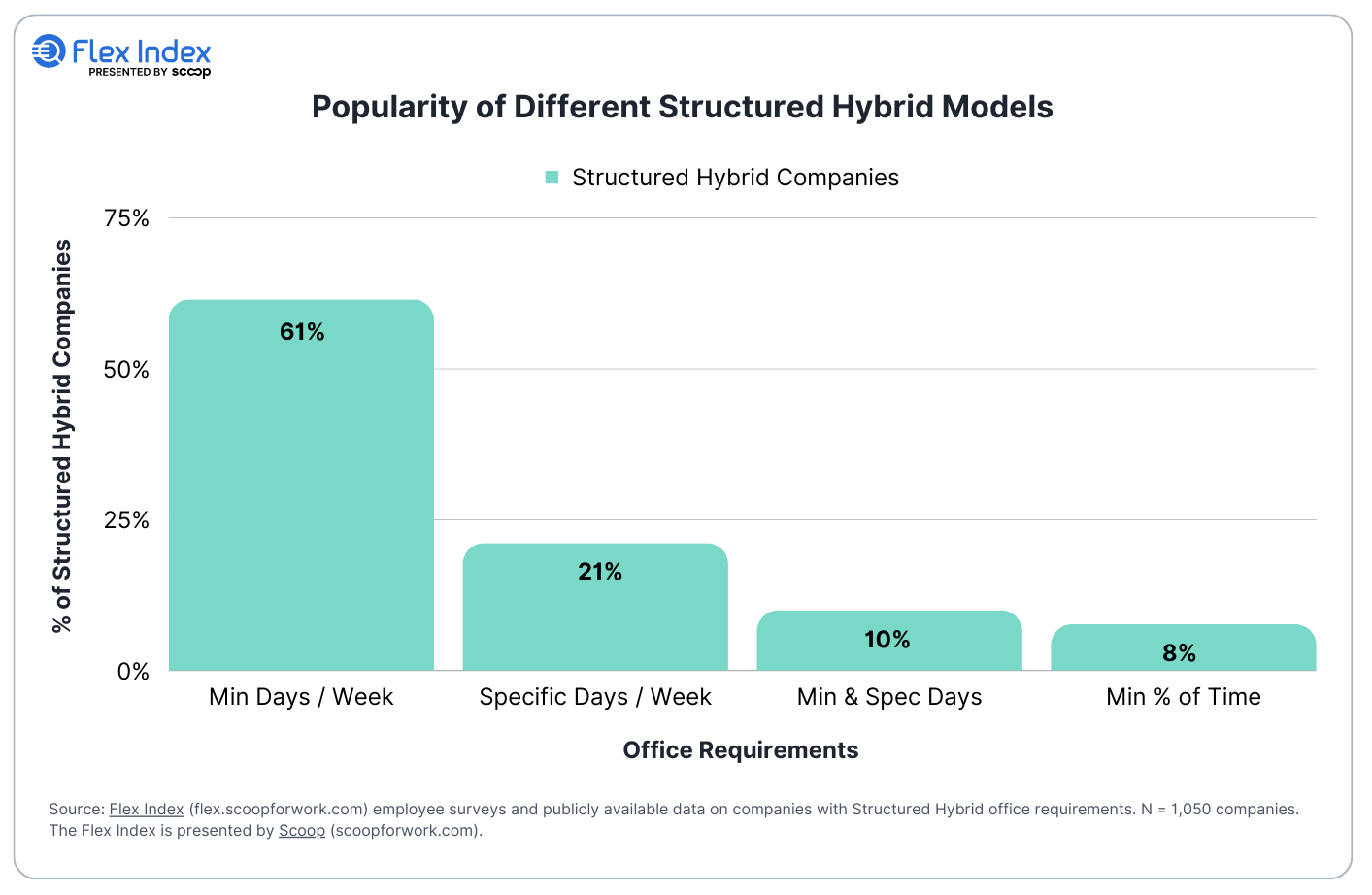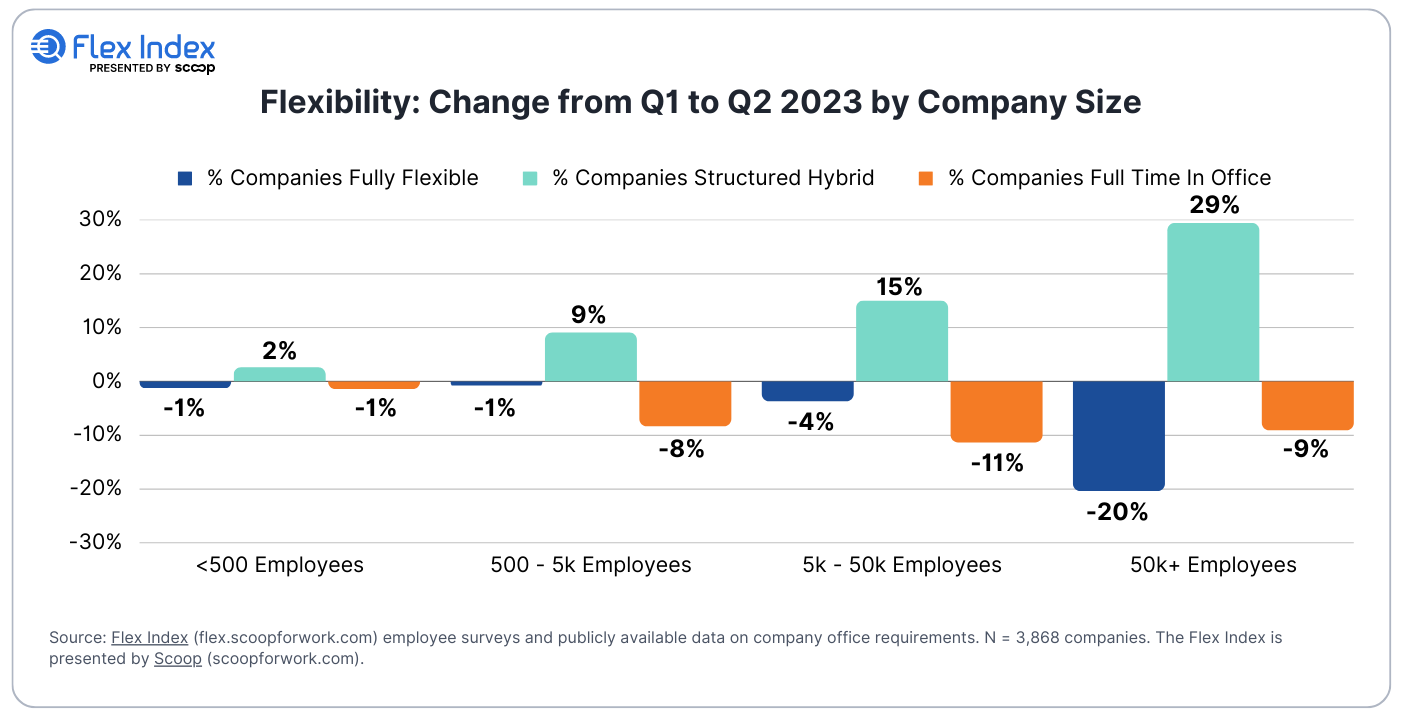Current Subscribers: 1,460; +25 since last week
Please forward to colleagues and friends! Link to subscribe.
By The Numbers
Total Flex Index Companies: 4,416
Company listings added, edited, or verified this past week: 173
Q2 Flex Report
It's been more than three years since the start of COVID-19 when hundreds of millions of people were first introduced to the experience of working remotely. While many parts of life have returned to pre-pandemic norms, where we work continues to be a hotly debated topic.
In just the last three months, we've seen a slew of announcements from larger companies shifting their office requirements. Disney increased its Minimum Days/Week per requirement to four days. Starbucks mandated corporate employees come into the office three days a week.
Even the big tech companies -- long viewed as the most remote-friendly large companies -- appear to be moving toward more on site work. Amazon and Lyft have announced plans to modify their flexible work policies in a push to bring employees back into the workplace at least half the week, and in some cases more.
So what’s happening? Is Fully Remote work vanishing? Is Full time in Office work becoming the norm? Or are these isolated examples that don’t reflect a larger trend?
Since our inaugural Flex Report in February 2023, we’ve added or edited thousands of companies on the Flex Index. We’ve tracked the changes across industries, regions, and company sizes - check out the full report!
Want a sneak peek of what’s in the report? Here’s a little preview 👇
The Rise of Structured Hybrid
In a significant shift from last quarter, 58% of US companies now offer flexible work (up from 51% in Q1). There has been a marked rise in Structured Hybrid companies; 30% of companies are now Structured Hybrid vs. 20% in Q1. Fully Remote has remained relatively constant at 7% of companies.
Minimum Days per Week Becoming the Dominant Structured Hybrid Model
61% of Structured Hybrid companies are Minimum Days/Week, compared to 47% in Q1 2023. Specific Days/Week is becoming less popular as employers find a need to allow teams and employees more flexibility to choose the best days to be in the office.
Large Companies Are the Biggest Movers to Structured Hybrid
Big companies are also the fastest-rising adopters of Structured Hybrid work. The percentage of companies with 50k+ employees adopting Structured Hybrid increased by 29 percentage points vs. Q1!
ICYMI: The Importance of Flexibility for Women | Danielle Weisberg & Carly Zakin (Co-Founders of theSkimm)
Danielle Weisberg and Carly Zakin are the Co-Founders of theSkimm. With more than 12M readers, theSkimm is dedicated to succinctly giving women the information they need to make confident decisions.
In this episode, Danielle and Carly discuss:
State of Women: Key findings from theSkimm’s recently published State of Women report
Flexible Work: Why women are pushing so hard for flexible work
Support: How you can support women based on the report's findings
Listen on Apple Podcasts, Spotify, or Amazon Music.
One Last Thing…
Add your company to the Flex Index with this 1-minute survey
Share this newsletter with friends and colleagues
About Scoop
Scoop is the fastest way to plan your next great office day. With Scoop, employees get more out of going in, with easily scheduled in-office days and invites. For HR and workplace leaders, Scoop provides insights on work location trends, office usage, and additional workplace solutions to get the most out of hybrid work.








